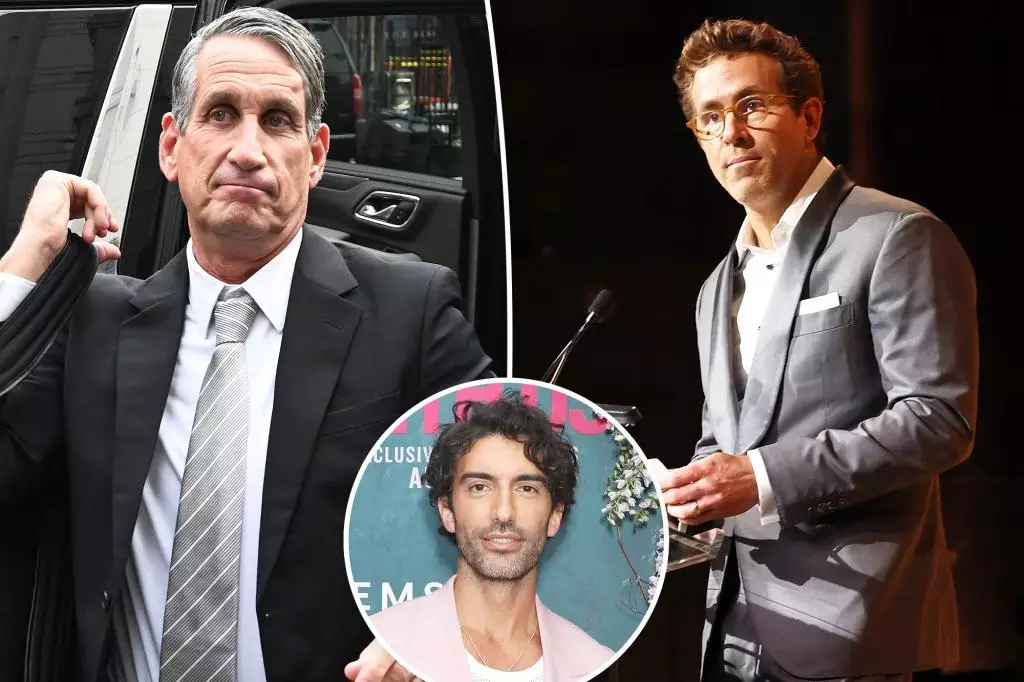In the world of celebrity, scandals unravel with dizzying speed, and the case between Justin Baldoni and Ryan Reynolds exemplifies this reality. A $400 million lawsuit filed by Baldoni against Reynolds, his wife Blake Lively, and their publicist has sent shockwaves through Hollywood, spotlighting the fine line between public perception and personal vendettas. The nature of claims, counterclaims, and assertions of character that swirl around these high-profile figures reveals not just legal entanglements, but deeper societal issues related to accountability and victimhood in the public domain.
Litigation vs. Reputation: The Legal Battleground
Bryan Freedman, Baldoni’s attorney, has voiced grave accusations, asserting that Reynolds is “running from the flames” sparked by his alleged misconduct against Baldoni, leverages a narrative rich in emotional weight. This figurative language not only dramatizes the legal scenarios unfolding but also magnifies the personal stakes involved in character assassinations that often accompany such disputes. Reynolds, purportedly a “key player” in a supposed smear campaign, finds himself navigating treacherous waters where both his personal life and public persona hang in the balance.
The assertion that Reynolds seeks dismissal while continuing to mock the situation in public forums encapsulates the complex relationship between celebrity antics and real-world implications. Freedman’s rhetoric critiques not only the celebrity’s behavior but also the passive acceptance of “bullying” that can occur in the high-stakes arena of public relations and litigation.
The Defamation Claims: A Double-Edged Sword
At the heart of this drama are the defamation claims made by Baldoni, who alleges that Reynolds branded him a “sexual predator” to third parties. Such character accusations are not simply inflammatory but also carry the potential for irrevocable harm. Reynolds’ defense, however, hinges on a strong belief in the First Amendment, arguing that his statements are opinions shaped by his wife’s complaints against Baldoni.
The attorneys for Reynolds assert that unless it can be demonstrated he didn’t believe his statements to be true, the claims against him lack legal merit. By framing the issue as one of opinion versus fact, Reynolds’ legal team attempts to dissolve the defamation narrative while simultaneously invoking a hot-button issue in today’s climate regarding accountability in accusations of misconduct.
It raises an interesting question: where does one draw the line between protecting free speech and harming an individual’s reputation? The blurred lines signify a broader societal struggle between the desire for justice and the fundamental rights conferred by the Constitution.
Public Scrutiny: The Role of Media and the Audience
The media frenzy surrounding high-profile lawsuits feeds public intrigue, often morphing facts into fodder for sensationalism. Commentators and spectators alike dissect every detail, often losing sight of the significant ramifications for those involved. In this case, the general public’s appetite for drama can easily eclipse the gravity of the allegations being tossed around like confetti.
Ryan Reynolds, known for his comedic and light-hearted roles, faces a particularly stark inconsistency between public image and the allegations of serious malfeasance leveled against him. His attempts to maintain a veneer of humor in the face of serious allegations may be perceived as both a defense mechanism and a calculated strategy to divert focus. However, this method can often backfire, as it risks trivializing the underlying issues at stake and could backfire in spurring even more outrage or suspicion.
The Implications for the Future
As the legal saga unfolds, it invites contemplation on the potential repercussions of such public lawsuits. January’s lawsuit has already shaken Baldoni’s career, leading to significant professional fallout, including his severance from the talent agency WME. The blurred lines of personal and professional reputations make one wonder how many other individuals behind the scenes may be quietly impacted or even silenced in fear of similar backlash in this hyper-visible industry.
With trials slated for 2026, the timeline promises to keep the narrative alive for some time, maintaining public interest but also inviting scrutiny into matters that could shape industry practices around accusations of harassment and retaliation. The underlying question becomes not just about Baldoni versus Reynolds but about the broader culture of silence, accountability, and the societal norms that dictate how we handle allegations in an era increasingly defined by vocal advocacy.
In an age where public perception often rules the narrative, the battle of a $400 million lawsuit showcases the complexities of character, integrity, and the paths to reclaiming reputations in a world that is always watching.

